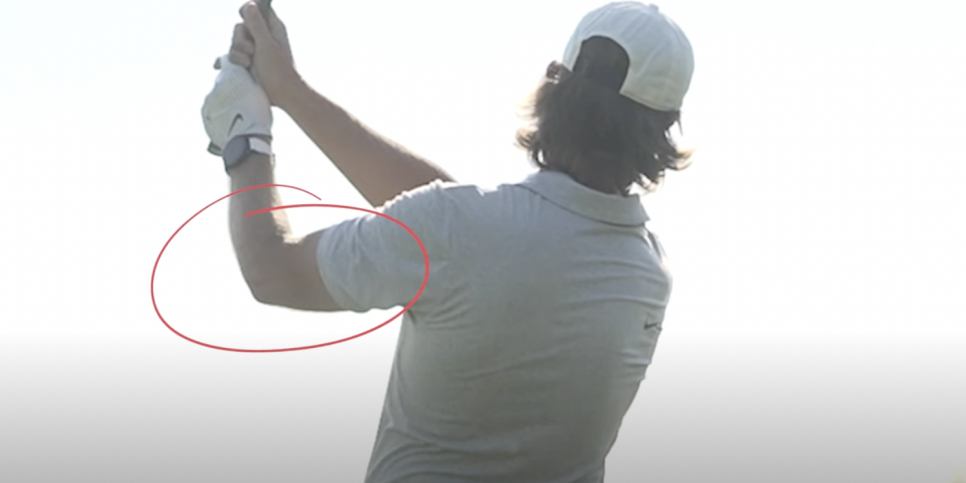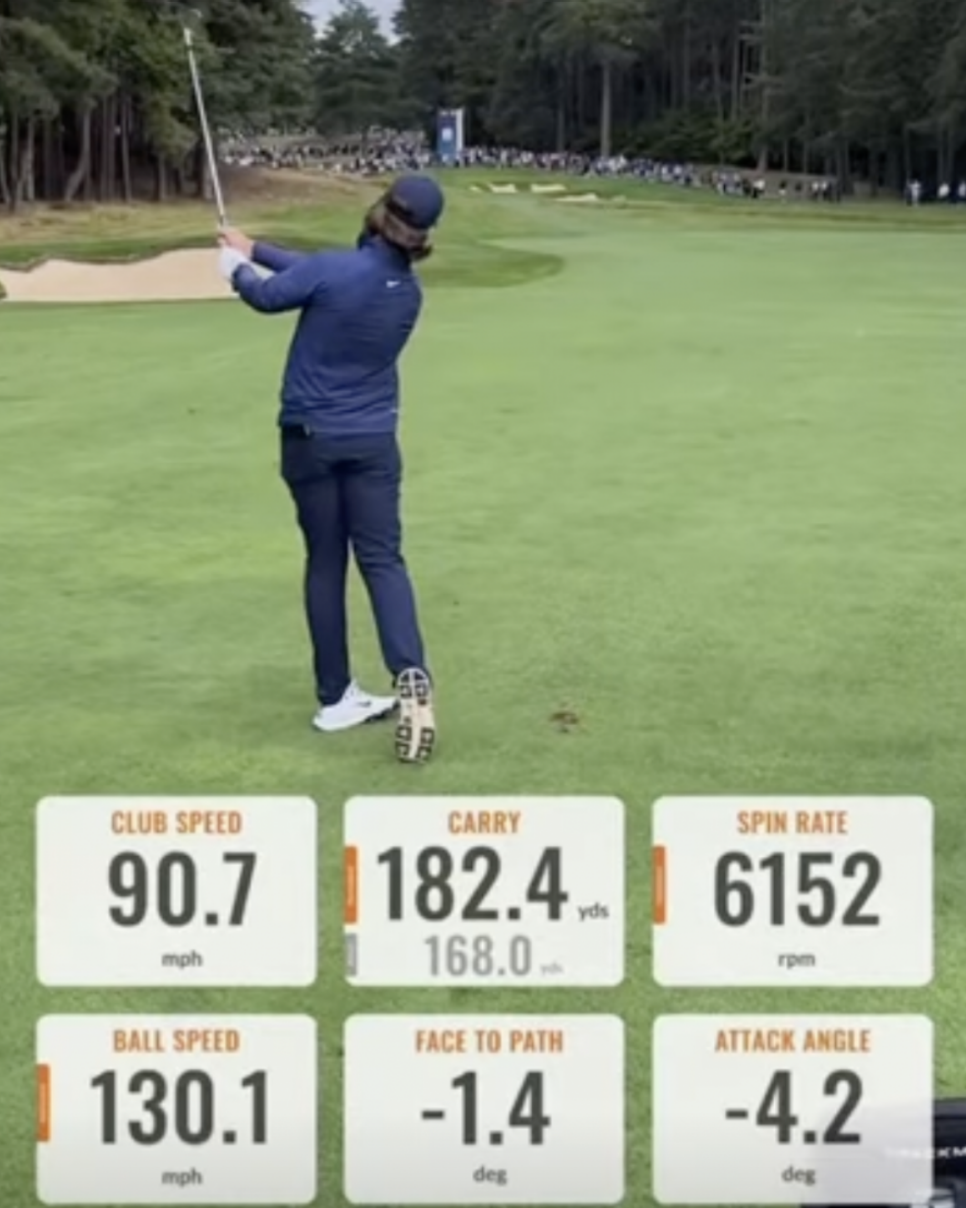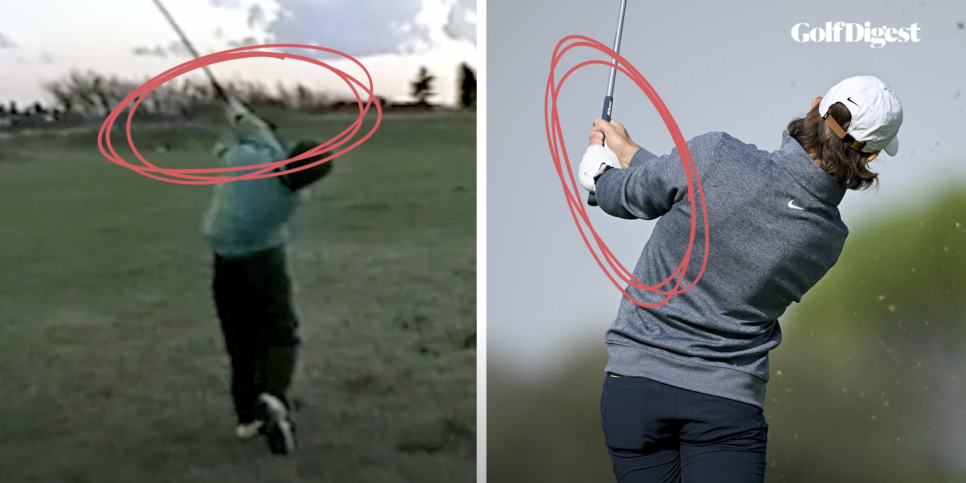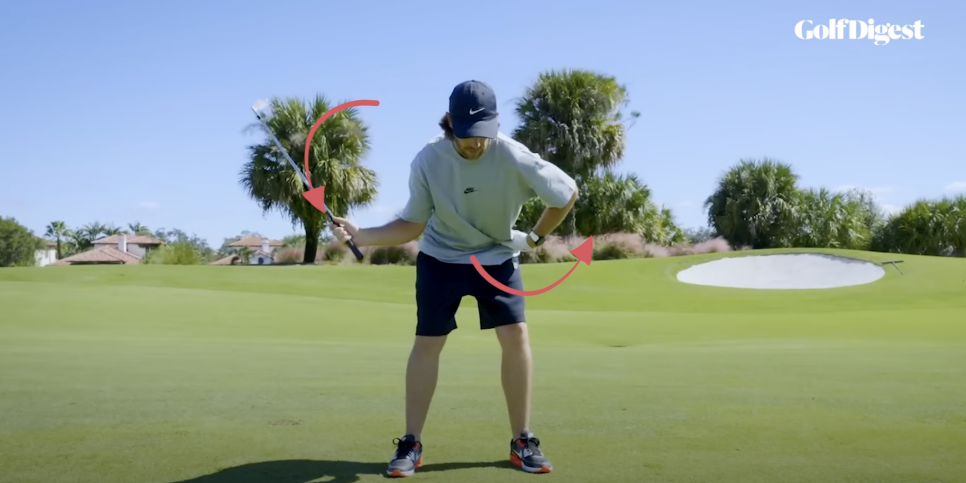Every golfer’s swing has a signature move, and Tommy Fleetwood’s is his follow through. It’s kinda short, a little punchy, and looks a bit like Tin Cup’s unfinished swing. Tommy’s always-balanced follow through is the end result of his golf swing but to learn from one of the best ball strikers in the game, we need to understand the journey it took to get there.
That’s what we break down in the latest episode of Film Study, which you can watch right here:
Some people will say that follow throughs don’t really matter because they happen after you’ve already hit the golf ball, but that’s not really true. Your follow through often leaves clues about what happened just before, in the swing itself.
The reason why Tommy Fleetwood’s follow through is so important is because it lands him in this position, right here. With his left arm relatively close to his torso.

Most tour players these days hit left-to-right fades. They like it because it eliminates a big left miss, and the extra spin gives them a little more margin for error on mis-hits.
But Tommy Fleetwood grew up hitting a draw, and that’s his stock shot today.
He does this because if you look closely, he swings slightly from in-to-out, or to the right of his target. But his clubface points slightly to the left of that.
The difference formed by those two things creates a slightly negative face-to-path of about -2 degrees. Face-to-path is a metric which measures the difference of the clubface direction, and the direction of your golf swing at impact, and Tommy’s slightly negative face-to-path is right in the sweetspot for a tight draw.

But when these two vectors start getting too far apart, mainly if he starts swinging too far out to the right, that’s when the bullet draws start turning into big high hooks. Aka, the dreaded left miss.
This is something Tommy used to struggle with in his swing. Look here at his move as a junior, his arms would often get ‘stuck’ behind him, which would force him to fling his arms way out to the right as he timed it with a big roll of his wrists. You can see it show up in young Fleetwood’s follow through in what teachers call a “high right” exit. Look how much higher his arms are then compare to now, and how much more his wrists have rolled the club over.

If you look at his short follow through from face on, you can see the second big problem it helps solve.
A common amateur golfer problem is not creating enough side bend on the downswing. But lots of junior golfers, who have lots of flexibility but not much strength, often struggle with the opposite problem. They generate too much side bend.
Tommy said that was his problem, too. Tommy’s head moves severely down and back on the downswing. That move would leave his upper body way behind his lower body. That’s what caused him to swing too far out to the right.
Stay centered as you turn 
Fleetwood was a top junior golfer and learned that move well. But his golf swing could be inconsistent and at times uncontrollable.
Tommy’s short follow through forces Fleetwood to keep his upper body more centered and on top of the ball as he turns through. He’ll often clear his left hip so he can use his body to push the club around him, which allows him to swing a little in-to-out, but not too much.
Fleetwood grooved his short follow through by focusing intensely on the impact zone: The space from from club parallel before impact, to club parallel after impact. He practiced dialing in this part of his swing by hitting lots of lots of punch shots. so much that the abbreviated punch shot follow through gradually became his actual follow through.
He’ll often pair these punch shots with his impact zone drill that tends to show up across social media from the range. The sticks are there from preventing his downswing from getting too in-to-out. And kind of double check to make sure his clubface and swing path is right where he wants it.
Years of hard work and repetition taught Tommy that sticking his finish, like a top-class gymnast, is a crucial parts of his routine. And that’s what he does; he sticks his finish, over and over again. It’s the secret that has allowed Fleetwood to within the fine margins other players can’t, and has transformed him into one of the most dialed, and best ball strikers in the game today.
You can watch the full video breakdown below:
This article was originally published on golfdigest.com

